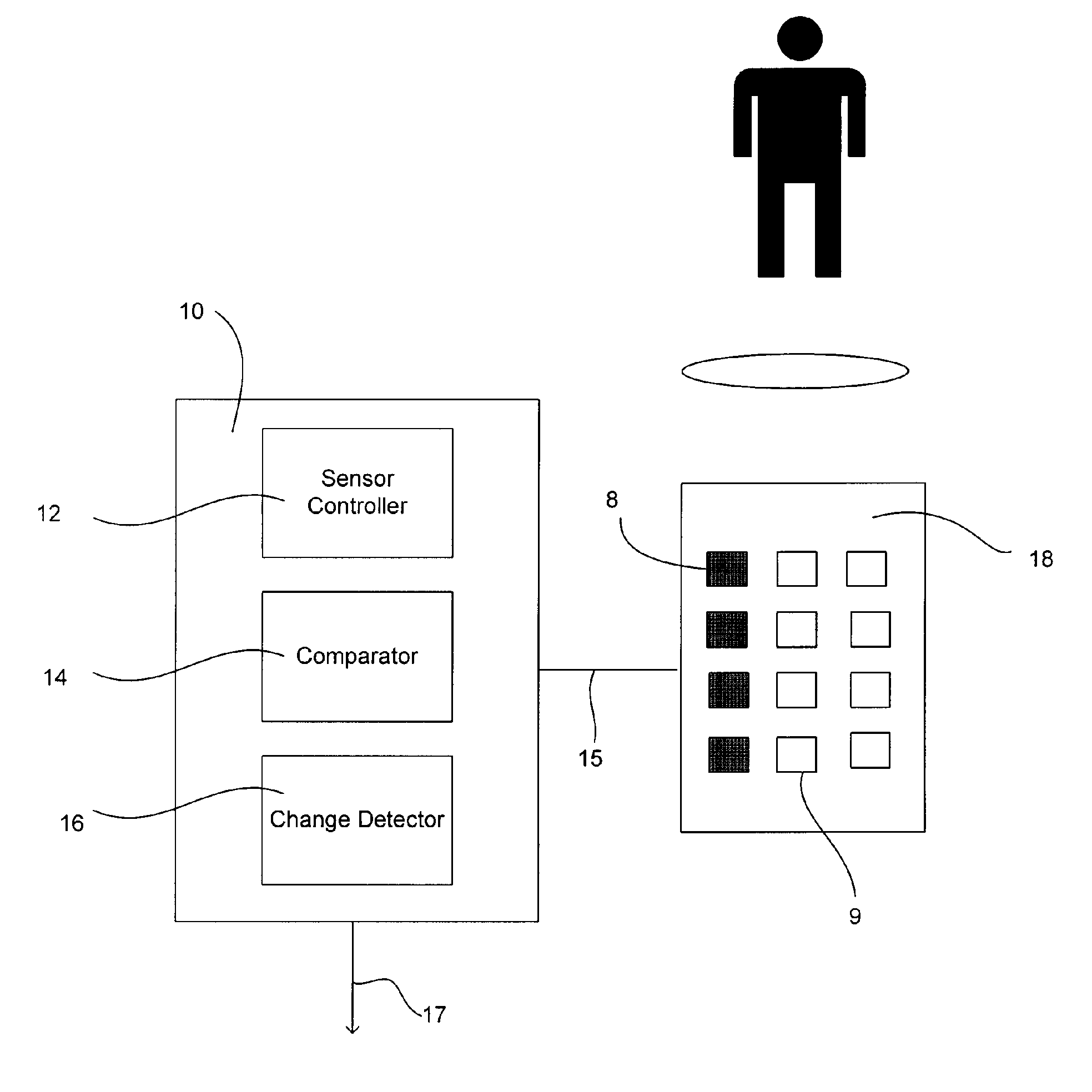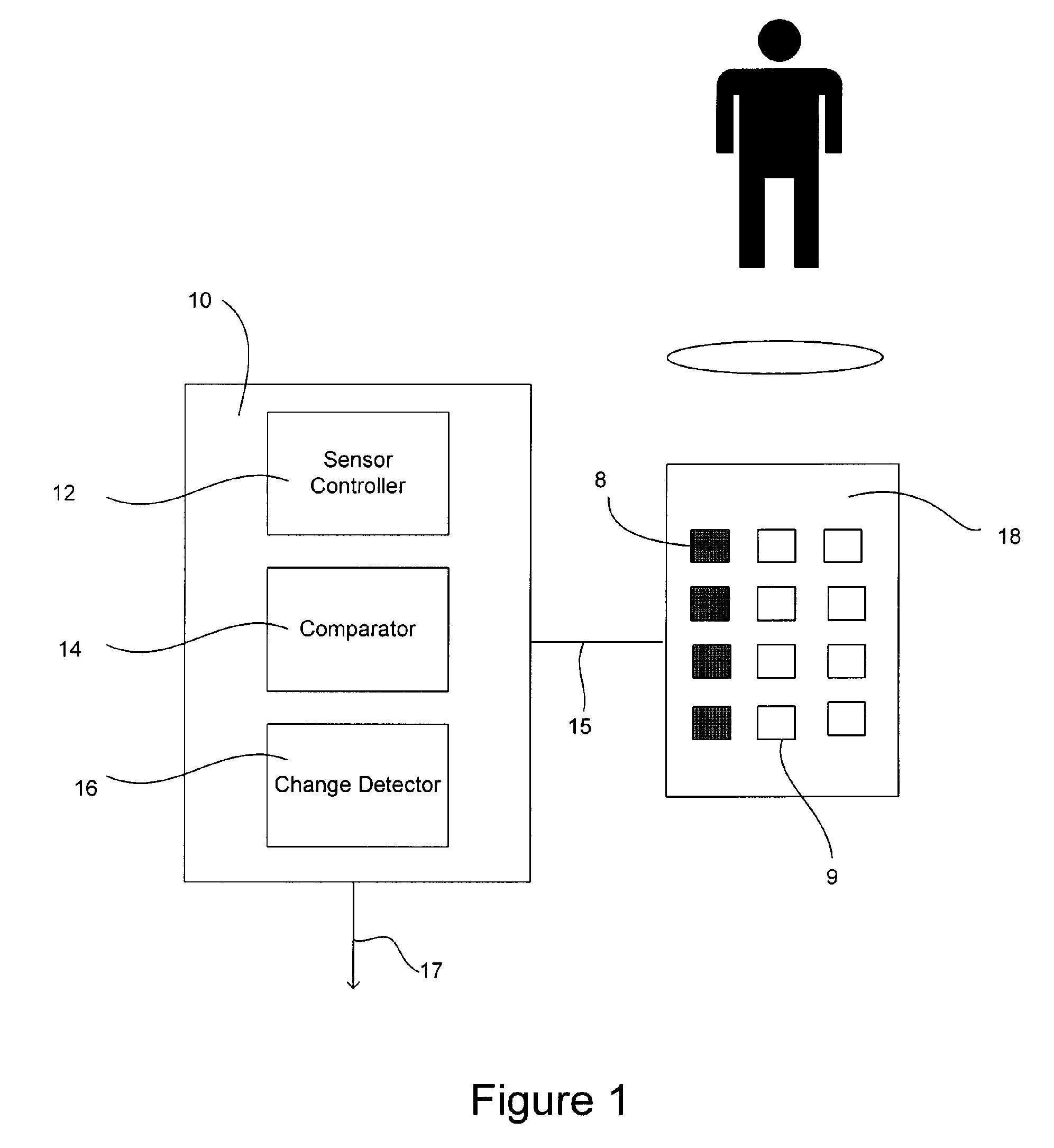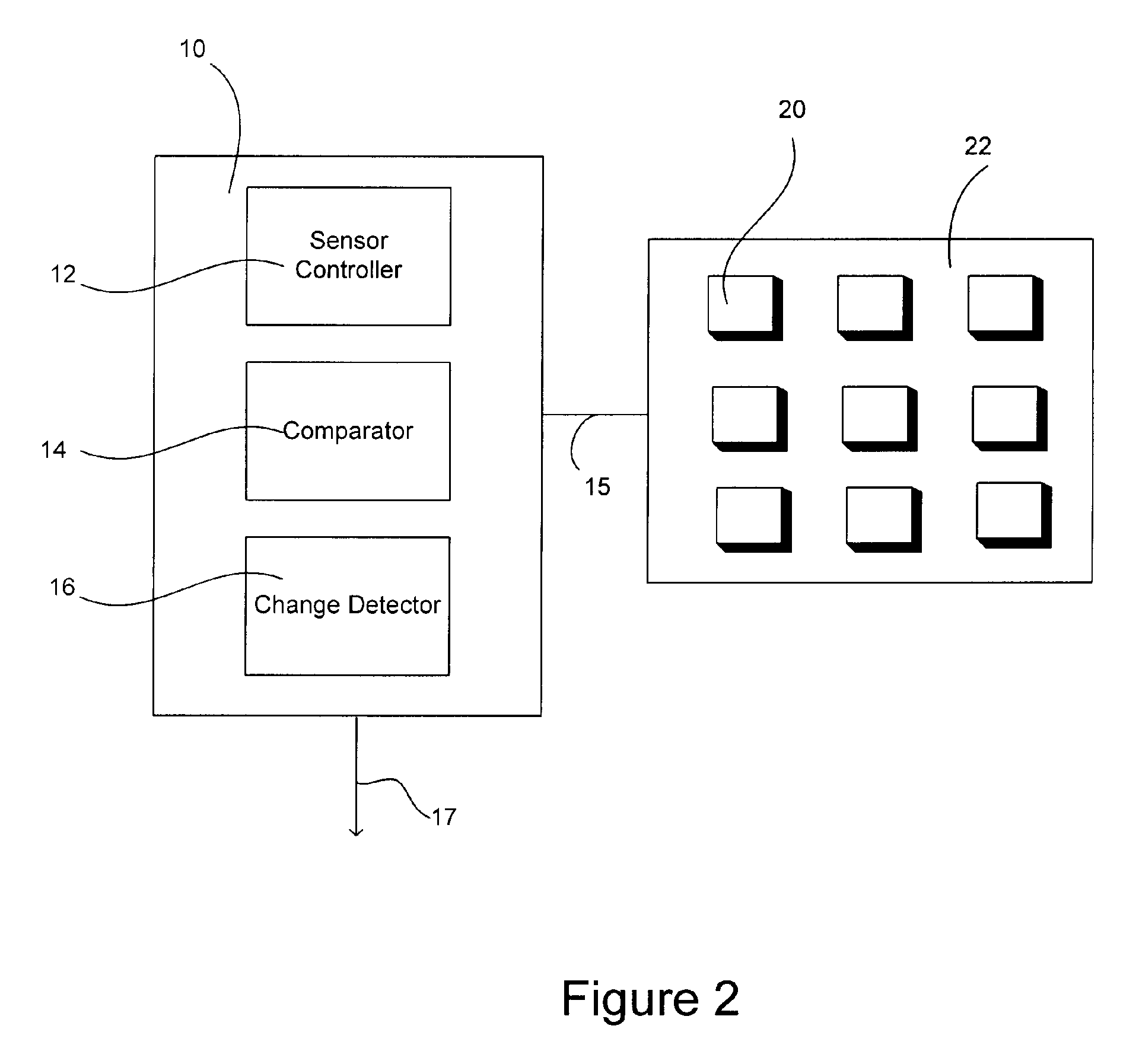Low-power surveillance sensor
- Summary
- Abstract
- Description
- Claims
- Application Information
AI Technical Summary
Benefits of technology
Problems solved by technology
Method used
Image
Examples
Example
DETAILED DESCRIPTION OF THE DRAWINGS
[0016] The following description should be read with reference to the drawings wherein like reference numerals indicate like elements throughout the several views. The detailed description and drawings show several embodiments which are meant to be illustrative of the claimed invention.
[0017]FIG. 1 is a schematic diagram of an illustrative sensing system. The illustrative sensing system includes a sensor array 18 and a controller 10. The illustrative controller 10 includes a sensor controller 12, a comparator 14, and a change detector 16. It is contemplated that the controller 10 may be implemented in software, hardware, or a combination thereof. In some cases, the controller 10 may activate a portion of the sensor array 8 while leaving the remaining sensors 9 inactive to reduce the power consumption of the sensor array 18. In other cases, the entire sensor array may be continuously active so that the sensor array remains thermally stable. This ...
PUM
 Login to View More
Login to View More Abstract
Description
Claims
Application Information
 Login to View More
Login to View More - R&D
- Intellectual Property
- Life Sciences
- Materials
- Tech Scout
- Unparalleled Data Quality
- Higher Quality Content
- 60% Fewer Hallucinations
Browse by: Latest US Patents, China's latest patents, Technical Efficacy Thesaurus, Application Domain, Technology Topic, Popular Technical Reports.
© 2025 PatSnap. All rights reserved.Legal|Privacy policy|Modern Slavery Act Transparency Statement|Sitemap|About US| Contact US: help@patsnap.com



